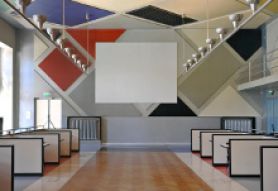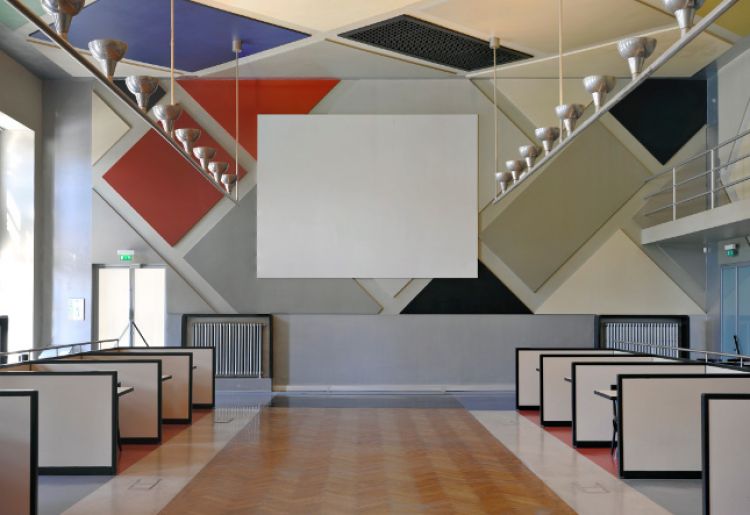"Ciné-dancing"

"Put man in the painting rather than in front of it," said Theo van Doesburg. It was in this avant-garde spirit, advocating total art in the service of life and its enhancement, that the three artist-designers worked on the decoration of the Aubette rooms.
The "Ciné-Dancing" was a large space where one could dance and watch films at the same time. Although the decor was designed by three different artists, its stylistic unity can be perceived, both here and elsewhere, throughout the building.
All the individual features, furniture, lamps, ashtrays, match the overall geometric decor. In the decorating of the walls and ceilings, Van Doesburg composed an oblique grid of squares, rectangles and triangles in black, white, yellow, blue, green and red. In doing so, he applied the theories of Elementarism, a form of geometric abstraction using diagonals developed from 1924 and contrasting with Mondrian's Neoplasticism, based solely on verticals and horizontals.
Solid colours, applied in a uniform and impersonal manner, resulted from the same technical and avant-garde concerns as those applied to furniture design and the use of materials.
